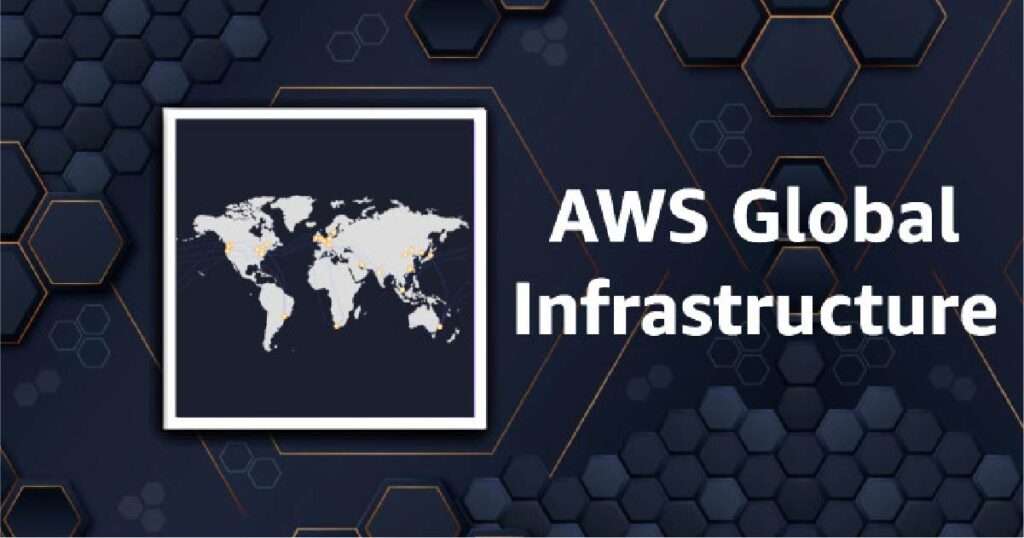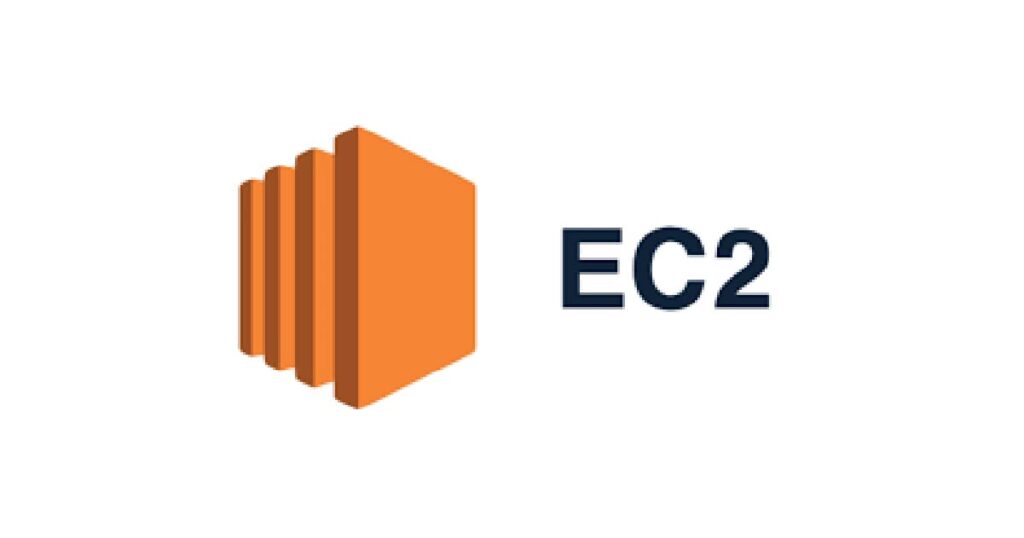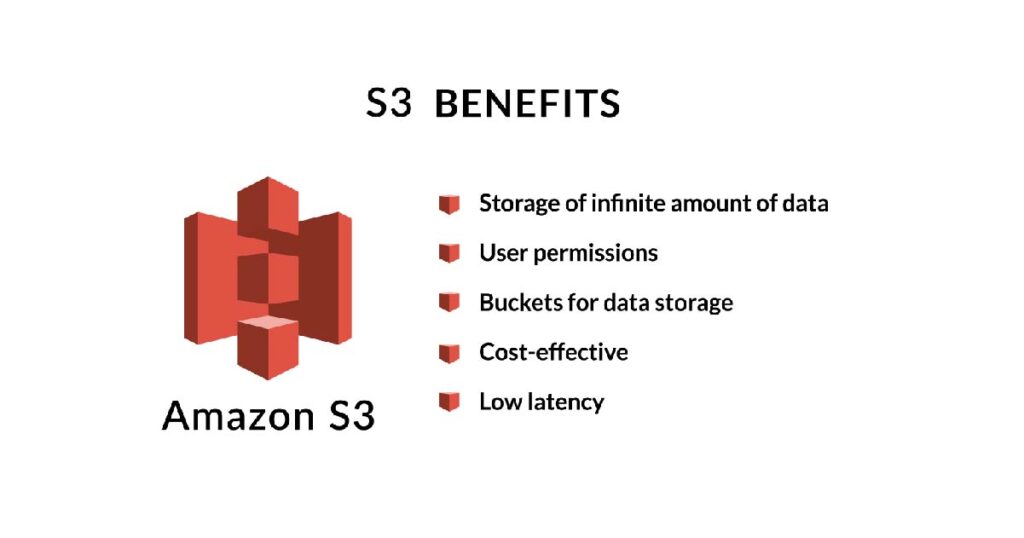Introduction
Amazon Web Services, short for AWS, is a key player in the world of cloud computing that offers innovative solutions to businesses worldwide. Cloud computing, without doubt, represents a transformative paradigm in the realm of technology, completely changing the way individuals and businesses access, store, and process data. And with a key player like AWS, it has become an essential aspect of modern IT architectures, fostering innovation, collaboration, and the rapid deployment of cutting-edge solutions. With the growing demand for skilled AWS professionals in the digital spere, job interviews are becoming crucial for aspiring candidates to reach their aim. To kickstart and be successful in this rewarding field, candidates need hands-on experience and a comprehensive understanding of AWS's ins and out as well as insights on frequently asked AWS interview questions. With a compiled list of the top 25 AWS Interview Questions and Answers, this article aims to empower job seekers and enthusiasts with the knowledge and insights needed to ace any and every AWS interview. No matter your experience level, whether a seasoned professional or a newbie, this guide will enhance preparation and confidence in facing AWS interview challenges.
Basic AWS interview questions
1. What is AWS and why is it so popular?
The first on our AWS interview questions is this. Amazon Web Services or simply AWS is a leading cloud computing provider, that offers a wide range of services including computing power, storage, databases, machine learning, and analytics. Because of its scalability, companies can adjust to shifting needs without having to make large upfront investments. One important consideration is how affordable AWS is since its pay-as-you-go pricing structure adapts to changing business requirements. Due to the platform's worldwide reach, performance and dependability are improved by low-latency service access from any location. AWS also prioritizes security, offering robust tools and compliance with industry standards.
2. Can you explain the AWS Global Infrastructure?

The core of Amazon Web Services (AWS) is the geographically dispersed network of data centers, edge locations, and points of presence known as the AWS Global Infrastructure. Users can deploy apps globally thanks to their high availability, low latency access, and redundancy for AWS services. By dividing the infrastructure into regions, each of which has several Availability Zones, high availability and fault tolerance are made possible. Designed to provide low-latency access to content delivery services like Amazon CloudFront, AWS boasts a global network of edge locations. Direct Connect offers dedicated network connections from on-premises data centers to AWS, while AWS Global Accelerator optimizes traffic routing from end users to applications hosted in multiple regions. Wavelength Zones allow applications to be deployed with extremely low latency.
3. Discuss the AWS shared responsibility model.
The security and compliance obligations that AWS and its clients have are outlined in the AWS Shared Responsibility Model. Infrastructure security, worldwide network security, and compliance certification are all handled by AWS. Data encryption, operating system and network configuration, identity and access control, and application security are all the responsibility of the customer. The model promotes collaboration and alignment between AWS and customers, enhancing overall security and compliance in cloud-based applications and data.
AWS interview questions on key services
4. Describe EC2 and its use cases.

Renting virtual servers on demand through Amazon Elastic Compute Cloud (EC2), a scalable service under Amazon Web Services (AWS), gives customers the flexibility and financial efficiency to run workloads and applications. It offers a variety of instance types, security groups, persistent storage options, and customizable Amazon Machine Images (AMIs). Machine Images (AMIs) in addition to instance types. Web hosting, data processing, high-performance computing, enterprise applications, hybrid cloud deployments, application development, and game development are among the common uses of EC2.
5. What are the benefits of Amazon S3?

Amazon Web Services (AWS) offers a scalable object storage service called Amazon Simple Storage Service (Amazon S3). It has several advantages, including data lifecycle management, scalability, durability, and cost-effectiveness, as well as strong security features, data transfer acceleration, versioning, event notifications, integration with other AWS services, global presence, and low-latency access to stored data. Its versatility makes it a reliable choice for various storage use cases, from backup and archiving to big data analytics and web application hosting.
6. Explain AWS Lambda and its serverless framework.
With Amazon Web Services' (AWS) serverless compute service, AWS Lambda, programmers can execute code without having to worry about managing or provisioning servers. Pay-per-use pricing, automatic scaling, stateless execution, multiple event sources, supported runtimes, and integrated security are all supported. The deployment and management of serverless applications are made easier by the open source serverless framework. It offers unified configuration, easy deployment, local development tools, extensibility, and multi-cloud support. While the serverless framework streamlines the creation, deployment, and management of serverless applications across several cloud providers, AWS Lambda streamlines code execution in response to events.
Security-related AWS interview questions
7. What is IAM in AWS and why is it important?
One essential service offered by Amazon Web Services (AWS) that lets users safely manage resource access is Identity and Access Management (IAM). Users, groups, roles, and policies make up this system. Security, identity federation, auditing, centralized management, temporary access, granular permissions, and integration with other AWS services all depend on IAM. It offers a strong framework for managing identities and restricting access to resources, guarantees compliance, and controls access in accordance with business needs.
8. How does AWS ensure data security?
No AWS interview questions are complete without this question. AWS provides a comprehensive approach to data security, encompassing physical, network, data encryption, identity and access management, and compliance with industry standards. The company uses physical security measures like 24/7 surveillance, access controls, and perimeter barriers, while network security includes Virtual Private Cloud (VPC) and firewalls. Industry-standard protocols for both in-transit and at-rest encryption are included in data encryption. AWS additionally provides CloudTrail and CloudWatch monitoring tools, AWS Key Management Service, and identity and access management policies. AWS also makes investments in innovation and ongoing development.
9. Discuss AWS Key Management Service.
Users can generate, manage, and exert control over cryptographic keys—which are necessary for both data encryption and decryption—using the centralized AWS Key Management Service (KMS). It integrates with AWS services like Amazon S3, Amazon EBS, and Amazon RDS, enhancing security. Encryption of envelopes, key rotation, audit trails, cross-region replication, and customer-managed keys are all supported by KMS. It supports various cryptographic algorithms and employs hardware security modules to protect keys. Data encryption, safe API access, cross-region replication, envelope encryption, key rotation, and regulatory compliance are all accomplished with KMS.
Database-focused AWS interview questions
10. Compare RDS, DynamoDB, and Redshift.
Three database services are available from Amazon Web Services (AWS): Amazon DynamoDB, Amazon Relational Database Service (RDS), and Amazon Redshift. RDS is a managed relational database service that supports various database engines and is suitable for traditional workloads. A managed NoSQL database service for high scalability and low latency applications is called DynamoDB. A managed data warehouse solution for intricate analytical queries on sizable datasets is called Redshift. The workload, data model, scalability requirements, and cost factors of the application all influence the decision between Redshift, DynamoDB, and RDS. Choosing the appropriate service is essential for maximum effectiveness and performance.
11. How does AWS handle disaster recovery in databases?
Frequently asked AWS interview questions like this need a little depth in answers. Several disaster recovery (DR) strategies for databases are offered by Amazon Web Services (AWS), including DB snapshots, automated backups, Multi-AZ deployments, Aurora, DynamoDB Global Tables, Amazon Redshift, and Elasticache. With the help of these features, users can restore their databases to any point during the backup retention period. Users should think about infrastructure as code, data encryption, multi-AZ deployments, cross-region replication, frequent testing, monitoring, and alerting in order to guarantee data resilience. It's however important to understand recovery options and develop a plan that complies with the organization's RTO and RPO specifications.
12. What are the benefits of Aurora over traditional databases?
Amazon Web Services (AWS) offers a relational database service called Amazon Aurora that is fully managed and compatible with both MySQL and PostgreSQL. It offers high performance, availability, scalability, security features, and a managed service model. It supports parallel query processing, multi-AZ deployments, continuous backups, auto scaling, and secure communication. Because Aurora is compatible with both PostgreSQL and MySQL, existing applications can be easily migrated. It is affordable because of its pay-as-you-go pricing and effective storage. Moreover, it facilitates low-latency access and disaster recovery by supporting global databases.
Networking AWS interview questions
13. Explain VPC and its components.
Amazon Web Services (AWS) offers a networking service called Amazon Virtual Private Cloud (Amazon VPC) that lets users build secure, private, and segregated networks inside the AWS cloud. Subnets, route tables, internet gateways, NAT gateways, VPC peering, Elastic Network Interfaces (ENIs), security groups, network ACLs, VPC endpoints, VPC flow logs, VPN connections, and direct connects are some of the essential elements of a virtual private cloud (VPC). With the help of these parts, users can construct intricate and scalable network environments in the AWS cloud that are isolated, secure, and customizable.
14. How does Route 53 work in AWS?
A scalable DNS web service provided by Amazon Web Services (AWS), Amazon Route 53 assists users with DNS record registration, resolution, hosting, management, and health checks. Numerous DNS record types are supported, such as A, AAAA, CNAME, MX, and TXT. Furthermore, Route 53 supports routing policies, employs a global network of DNS servers for low-latency resolution, and offers health checks to keep an eye on the condition of resources. It provides a visual policy editor for routing configurations, logging and monitoring capabilities, and integration with other AWS services.
15. Discuss the functionality of AWS Direct Connect.
Amazon Connect is a cloud-based contact center service by Amazon Web Services (AWS) that enables organizations to manage customer interactions through various channels, including voice, chat, and email. It supports multiple communication channels and handles both inbound and outbound customer interactions. With AWS Direct Connect, companies can connect their on-premises data center to AWS through dedicated, private networks that improve network performance, lower data transfer costs, boost security, offer reliable connectivity to remote users, enable large-scale data transfers, aid in disaster recovery, guarantee network redundancy and high availability, and have a global reach.
Advanced AWS interview questions:
16. What are AWS Elastic Beanstalk and its uses?
This is one of the advanced AWS interview questions you can be asked. The fully managed service AWS Elastic Beanstalk makes it easier to scale, manage, and deploy applications in the AWS cloud. With its support for a wide range of frameworks and programming languages, developers can concentrate on creating code while AWS takes care of infrastructure management. Automated application deployment, multi-tier architecture, managed environments, auto-scaling, integrated development and CI/CD, easy configuration, built-in monitoring, platform updates, and database integration are some of the key features. Elastic Beanstalk is appropriate for hosting web applications, microservices architecture, API backend services, continuous deployment, prototype and testing environments, and scalable web applications because it supports a wide range of platforms and programming languages.
17. Discuss container services in AWS (ECS, EKS).
Amazon Web Services (AWS) offers two primary container services, Amazon Elastic Container Service (ECS) and Amazon Elastic Kubernetes Service (EKS), to facilitate the deployment, management, and orchestration of containerized applications. Without requiring users to oversee the underlying infrastructure, ECS streamlines the deployment, management, and scaling of containers. It integrates seamlessly with other AWS services, supports task definitions and services, organizes containers into clusters, supports two launch types, and provides integrated service discovery. On the other hand, EKS, as fully managed Kubernetes service makes using Kubernetes for containerized applications deployment, management, and scaling easier. Apart from supporting worker nodes, it is also compatible with current Kubernetes tools and applications while offering add-ons for more functionality.
18. How does AWS support machine learning and AI?
AWS provides a range of services and tools to support machine learning and artificial intelligence (AI) workflows. These services cover various aspects of the ML and AI lifecycle, from data preparation and exploration to model training and inference. AWS Glue is a fully managed ETL service, and AWS S3 is a scalable object storage service used for data storage. A data labeling tool called SageMaker Ground Truth makes it easier to rapidly create reliable training datasets for machine learning. A fully managed solution for creating, honing, and implementing ML models at scale is SageMaker. Pre-configured machine images with well-known deep learning frameworks, libraries, and tools are offered by AWS Deep Learning AMIs.
Tool-focused AWS interview questions
19. What is AWS CloudFormation?
Using a declarative language, users can define and provision infrastructure as code (IaC) with AWS CloudFormation. Using JSON or YAML templates, users can specify their infrastructure needs, including different AWS resources and configurations. AWS CloudFormation Designer, integration with AWS services, StackSets, AWS Serverless Application Model (AWS SAM), templates, stacks, declarative language, resource types, parameters, outputs, conditions, change sets, rollback protection, and cross-stack references are some of the key features.
20. Discuss AWS CloudWatch and its uses.
Amazon CloudWatch is a monitoring and observability service by Amazon Web Services (AWS) that collects and tracks metrics, log files, and sets alarms to help users monitor their AWS resources, applications, and services. It provides insights into performance, health, and operational status, enabling proactive management and troubleshooting. Metric gathering, creating dashboards, alarms and notifications, log monitoring, data storage and retention, real-time analysis, integration with AWS services, custom metrics, events, resource tagging, global monitoring, contributor insights, cost monitoring, and compliance monitoring are some of the key uses.
Scenario-based AWS interview questions
21. How would you optimize costs in AWS?
AWS cost optimization involves strategic planning, efficient resource utilization, and cost management tools. AWS Savings Plans, Reserved Instances (RIs), Spot Instances for fault-tolerant workloads, and rightsizing resources are some strategies. Frequent cost tracking and analysis with serverless architectures, auto scaling, and tools like AWS Cost Explorer and AWS Budgets. AWS Free Tier should be utilized, lifecycle policies for storage should be implemented, Application Load Balancers should be used to optimize costs when it comes to data transfer; budgets should be used; teams should be trained in cost management; AWS cost management tools should be investigated; licensing expenses should be minimized; and third-party tools should be investigated.
22. Describe a scenario where you solved a problem using AWS.
AWS interview questions like this are to be expected. Using AWS solutions, a fictitious scenario involving the e-commerce platform TechMart was resolved where their website was experiencing slow page load times, performance issues, increased bounce rates, potential decrease in revenue, and user experience due to a sudden surge in traffic concerning a recent flash sale. Web servers were auto-scaled, content delivery via Amazon CloudFront, read traffic offloading via Amazon RDS Read Replicas, session management via Amazon ElastiCache, static asset storage via Amazon S3, security via AWS WAF, performance metrics via CloudWatch Alarms and Monitoring, and serverless functionality via AWS Lambda were all put into place. These solutions improved the website's performance, reduced page load times, and reduced downtime risks, enhancing overall reliability and security.
23. How do you approach migration to AWS?
Determining goals, evaluating the IT environment, spotting possible threats, selecting migration tactics, creating the AWS architecture, configuring the AWS environment, moving data, moving applications, testing, training, documenting, optimizing, managing costs, overseeing, governance, go-live and post-migration assistance, post-migration assessment, and ongoing improvement are all part of the process of migrating to Amazon Web Services (AWS). This structured approach ensures a successful migration while minimizing risks and disruptions, while fostering flexibility and adaptability. By following this approach, organizations can minimize risks and ensure a smooth transition to AWS.
Future-focused AWS interview questions
24. What emerging trends in AWS should we look out for in 2024?
AI and machine learning, serverless computing, edge computing, data analytics, quantum computing, security, containerization, 5G technology integration, edge AI, sustainability, green computing, DevOps practices, AR and VR, blockchain services, and industry-specific solutions are all being embraced by AWS.
25. How is AWS adapting to the demands of edge computing and IoT?
We bring our AWS interview questions and answers to an end with this question. With a variety of services and features, Amazon Web Services (AWS) is meeting the needs of edge computing and the Internet of Things (IoT). These consist of Amazon FreeRTOS, AWS IoT SiteWise, AWS Edge Services, AWS Panorama, AWS IoT EduKit, edge optimized IoT Services, AWS IoT Core, AWS IoT Greengrass, AWS IoT Analytics, AWS Wavelength, AWS Snow Family, and AWS IoT FleetWise. With the help of these services, applications needing low latency, real-time analytics, and effective network resource usage should be able to process data decentralized.
Conclusion
By building on the carefully selected AWS interview questions in this article, seasoned experts and novices alike can be equipped with the needed confidence and knowledge to excel in any AWS interview and land their dream jobs. For positions in development, security, DevOps, or cloud architecture, familiarity with these subjects is required. Beyond interview preparation, there is ongoing education and keeping up with AWS developments as demand and expectation for such professionals are changing with technology hence the need for continuous learning and improvement in the field.



